

How social media is affecting teens. Peer Influence and Adolescent Behavior. Chimamanda Ngozi Adichie: The danger of a single story. I am ... I am not ... Teens' Identity. Teaching Identity. Identity and the Classroom. The Huge Misconception About Reading. Sarah-Jayne Blakemore: The mysterious workings of the adolescent brain. NPR's 100 Best-Ever Teen Novels. The 100 Best Young-Adult Books of All Time. We’re living in a golden age of young-adult literature, when books ostensibly written for teens are equally adored by readers of every generation.

In the… We’re living in a golden age of young-adult literature, when books ostensibly written for teens are equally adored by readers of every generation. In the likes of Harry Potter and Katniss Everdeen, they’ve produced characters and conceits that have become the currency of our pop-culture discourse—and inspired some of our best writers to contribute to the genre. To honor the best books for young adults and children, TIME compiled this survey in consultation with respected peers such as U.S. Children’s Poet Laureate Kenn Nesbitt, children’s-book historian Leonard Marcus, the National Center for Children’s Illustrated Literature, the Young Readers Center at the Library of Congress, the Every Child a Reader literacy foundation and 10 independent booksellers.
10 Culturally Responsive Books To Kick Start Your Class Library - Teach Me T. Diverse voices: the 50 best culturally diverse books. This list of culturally diverse books to read, savour and recommend is a joyous celebration of the 50 most fabulous books for children of all ages living in multiracial, multicultural UK today.

Thanks to Seven Stories, The National Centre for Children's Books for sharing the list with us today – and to the experts they called on to pull it together: Julia Eccleshare (the Guardian children's books editor), Jake Hope (from Youth Libraries Group), Library specialist Sarah Smith and Katherine Woodfine from the Book Trust. Multicultural/Culturally-Responsive Books - Curriculum Collection at Lewis Library - Research Guides at Loyola University Chicago. What are the best books about identity for teenagers?
Alan Gibbons, author of Hate The Crew by Bali Rai Few people write better about identity than Bali Rai.
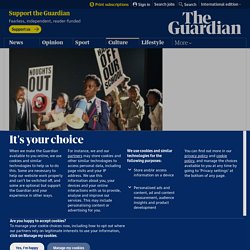
The Crew assembles a group of kids in what the media calls a 'tough' neighbourhood, but the novel is about love and friendship. The cast reflects modern Britain and is made up of people – not stereotypes. The Skin I'm In by Sharon G. Flake. Teaching YA Lit through Differentiated Instruction. What is Identity? Identity encompasses the memories, experiences, relationships, and values that create one’s sense of self.
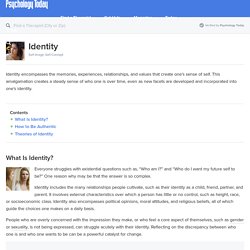
This amalgamation creates a steady sense of who one is over time, even as new facets are developed and incorporated into one's identity. The pioneering identity researcher Erik Erikson proposed an enduring theory of development. Erikson divided the lifecycle into eight stages that each contained a conflict, with the resolution of those conflicts leading to the development of personality. The conflict that occurs during adolescence, Erikson believed, is “identity versus role confusion.” Adolescents grapple with so many different aspects of identity, from choosing a career path to cultivating moral and political beliefs to becoming a friend or partner.
Identity formation is most acute during adolescence, but the process doesn’t stop after the teen years. Adolescent Reflections about Controversial Young Adult Literature. 5 Major Social And Emotional Problems In Adolescence. Sociocultural approaches to literacy by Lina Trigos on Prezi. Learning Identity: A Sociocultural Perspective. Social Media, Social Life: How Teens View Their Digital Lives. Neighborhoods influence use of African American Vernacular, Stanford research shows.
By Clifton B.

Parker In a new study, linguistics Professor John Rickford and colleagues examined how the neighborhoods where people live affect their use of African American Vernacular English. (Image credit: L.A. Cicero) What neighborhood children grow up in can influence their use of African American Vernacular English and eventual prospects for educational success and socio-economic mobility, a new Stanford study shows.
In the first experiment of its kind on the subject, Stanford linguistics Professor John Rickford and his colleagues (several of them economists) sought to better understand what shapes the relative use of African American Vernacular English vs. Teaching Tolerance - Diversity, Equity and Justice. Objectives: Students will be able to describe their various group identities.Students will be able to analyze how people’s identities are represented in books.Students will be able to write a book review evaluating how characters’ identities are similar to and different from their own.
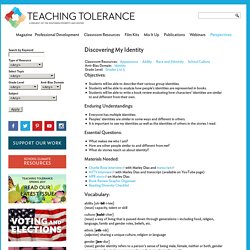
Enduring Understandings: Everyone has multiple identities.Peoples’ identities are similar in some ways and different in others.It is important to see my identities as well as the identities of others in the stories I read. 6 Great Websites for Teen Writers. It’s exciting when your bookworm teen announces his or her plans to be a writer.
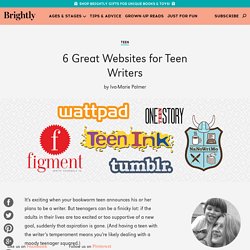
But teenagers can be a finicky lot: if the adults in their lives are too excited or too supportive of a new goal, suddenly that aspiration is gone. (And having a teen with the writer’s temperament means you’re likely dealing with a moody teenager squared.) Rather than bombard them with fancy pens and motivational reading, direct them to a comfort zone: the Internet. 6 Tips for Building Positive Teen Identity. Our sense of self provides the foundation for how we respond and react in every situation we face.

When we feel good about who we are and stress knocks on our door, we are more likely to make positive choices. When we feel horribly about our inner self, then our choices will reflect that as well. This is why knowing how identity development manifests in the brain is key to connecting with and supporting the future potential in all of your students. When we learn about brain development, we often focus on the underdeveloped prefrontal cortex’s (PFC) limited ability to cool down the hot-tempered, super charged limbic system, predominantly the amygdala, home of fear, stress and paranoia. Teaching Teen Identity. Lesson: Who Am I? This lesson is part of the unit Identity & Community: An Introduction to 6th Grade Social Studies “Who am I?”
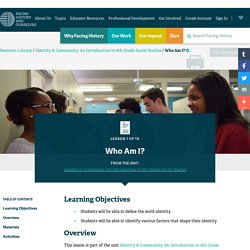
Is a question we all ask at some time in our lives. It is an especially critical question for adolescents. As we search for answers we begin to define ourselves. Implementing Critical Literacy with Adolescent Girls. TeachingBooks. Guided Discussions.